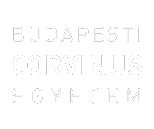Valentinyi, Virág Kitti (2020) The Circle of Life: The Analysis and Review of the European Commission’s Circular Economy Package. BA/BSc szakdolgozat, BCE, International Study Programs. Szabadon elérhető változat / Unrestricted version: http://publikaciok.lib.uni-corvinus.hu/publikus/szd/Valentinyi_Virag_Kitti.pdf
|
PDF
- Requires a PDF viewer such as GSview, Xpdf or Adobe Acrobat Reader
1MB |
Szabadon elérhető változat: http://publikaciok.lib.uni-corvinus.hu/publikus/szd/Valentinyi_Virag_Kitti.pdf
Absztrakt (kivonat)
What would happen, if we could implement the circularity in nature in our economy? The intriguing question above and the fact of the urging need to revisit waste management practices around the globe for a sustainable future have started to motivate scientists, economists, and policy makers to think of a new model. The circular economy model (CE) was created. CE focuses on what is already in use and the ways to maximize it from all perspectives of the lifecycle of the product: from the sourcing plant all along the supply chain and after consumption to support converting back the remaining useful parts into a new source to satisfy another demand. (Esposito, M et.al., 2018) The European Union revised its Circular Economy practices and it resulted in the EU Circular Economy Package of 2015, which is the first consistent written assortment that redefines the approach to long-term sustainability versus economic growth, by raising opportunities instead of problems in the European Union’s economic system. Thus, the policy package is considered as kind of a nexus. The aim of my thesis work is to investigate an efficient way of transition from the traditional linear to the circular economy model. In the theoretical part, I am investigating the existing theories of the CE primarily, then turning focus to the current situation of waste management in the European Union, reviewing the nature and functioning of reverse supply chains before moving on to the European Commission’s CE Package and further regulations, guidelines in favor of the circularity of materials and energy in the economy. As part of the methodology, I executed both quantitative and qualitative analyses that are mostly based on already existing data, derived from various academic and business or governmental sources. For the first sub-question, I designed a simplified linear and circular supply chain model as well, identifying the points of untouched resource inputs and the outputs of waste and pollution. This helped me define the critical path of the transition and the most crucial step: the design of the product. In the second subquestion I focused on the criteria of ecodesign and built cases on three of the significant issues to solve: (1) increase durability – the case of soils, (2) single-use plastics – the case of oceans and (3) product-asa- service – the case of us. In the final sub-question, I explored the Regional Competitiveness Index (RCI) of the EU with its sub-indexes serving as the foundation of the reasoning. Each pillar of the study is being analyzed in a sense if the positive, negative or neutral effect of a circular operation to the metrics, thus, to draw a conclusion about the changes in competitiveness overall. The most important findings from the sub-questions are the following: 1. The most critical element in the transition from a linear economy to a circular one is the design of the product, to originally utilize ecodesign in order to avoid and minimize waste generation. Still, during the CE processes, there is some waste generated in each phase. 2. There are certain mismatches between the newly revised ecodesign standards of the EC and the operation strategies of enterprises, which require several trade-offs to reach the desired level of circularity. 3. The level of competitiveness of the European Union’s economy would remain approximately the same or could even increase it, mostly driven by innovation and the creation of new institutions and the development of supervising quality and extended scope of existing ones. The most efficient form of the transition is the establishment of industrial symbioses (IS). Symbiosis in biology means a long-term “living together”. For businesses, the idea behind the system is that the waste generated by one industry or company is reutilized by another one as (secondary) raw materials. Both new substances and landfill waste are reduced in this structure. Not only the materials, but gases and even the heat can be reused in several creative and innovative ways. This form of operation is planned to be highly supported with the development of industry level reporting and certification system. In a symbiosis like that, firms would be able to benefit from the use of shared resources, which is the most suitable first step in the transition process. Apart from the core benefits it also improves the competitive position in global markets. MNCs with already highly developed global value chains theoretically should be more willing and able to execute the transition and involve themselves in an IS, as they are the biggest contributors to waste generation and the need to handle waste efficiently emerges faster in their position. However, in case of SMEs, such production, quality and environmental standards are significantly costly to adjust to and they do not necessarily have the option to join an industrial symbiosis, thus, the EU needs to concentrate more on the support of SMEs in either constructing or joining an already on ground IS. Considering the different points of my thesis work, there is a high potential in the very near future – according to the ambitious plans of the EU by 2050 – to increase the level of circularity from the current 6% to the desired 91%.
| Tétel típus: | BA/BSc szakdolgozat |
|---|---|
| Témakör: | Környezet-gazdaságtan, környezetvédelem Nemzetközi gazdaság |
| Azonosító kód: | 13998 |
| Képzés/szak: | Economist in International Business |
| Elhelyezés dátuma: | 06 Okt 2021 12:59 |
| Utolsó változtatás: | 02 Dec 2021 11:52 |
Csak a repozitórium munkatársainak: tétel módosító lap

